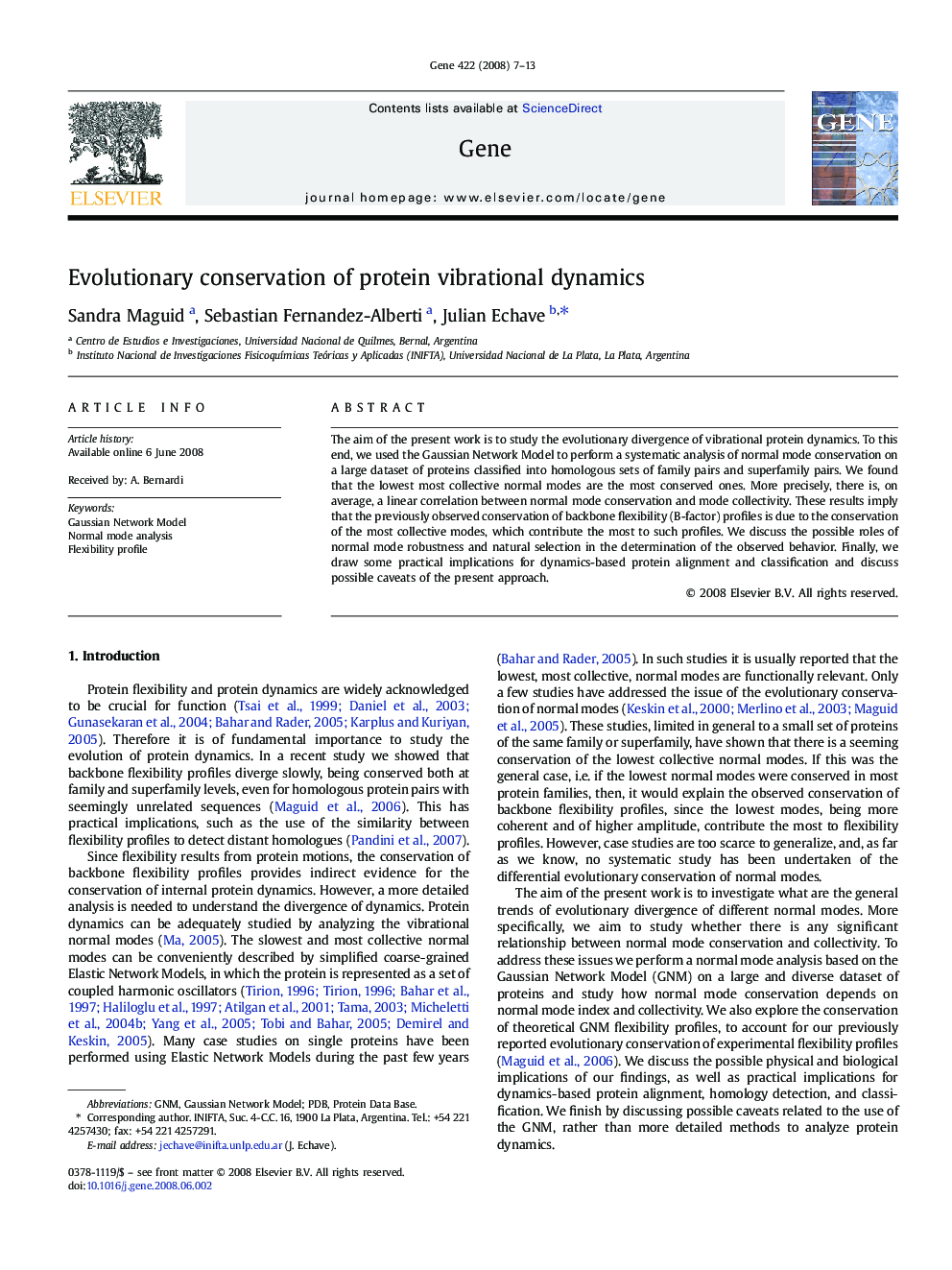| Article ID | Journal | Published Year | Pages | File Type |
|---|---|---|---|---|
| 2819139 | Gene | 2008 | 7 Pages |
The aim of the present work is to study the evolutionary divergence of vibrational protein dynamics. To this end, we used the Gaussian Network Model to perform a systematic analysis of normal mode conservation on a large dataset of proteins classified into homologous sets of family pairs and superfamily pairs. We found that the lowest most collective normal modes are the most conserved ones. More precisely, there is, on average, a linear correlation between normal mode conservation and mode collectivity. These results imply that the previously observed conservation of backbone flexibility (B-factor) profiles is due to the conservation of the most collective modes, which contribute the most to such profiles. We discuss the possible roles of normal mode robustness and natural selection in the determination of the observed behavior. Finally, we draw some practical implications for dynamics-based protein alignment and classification and discuss possible caveats of the present approach.
